Family: Siricidae
Family common name: horntails
Subfamily: Tremecinae
Genus: Eriotremex Benson, 1943
Subgenera: none
The Siricidae are called “horntails” because of the cornuscornus:
a pointed horn-like process on the apical end of the abdomen in Siricidae sawflies; on tergite 10 in females, sternite 9 in males
 , a short spine at the apexapex:
, a short spine at the apexapex:
the end or most distal area of any structure
of the abdomenabdomen:
the third and last segment of an insect's body; in sawflies this is usually made up of 11 segments (segments 9 and 10 often fused)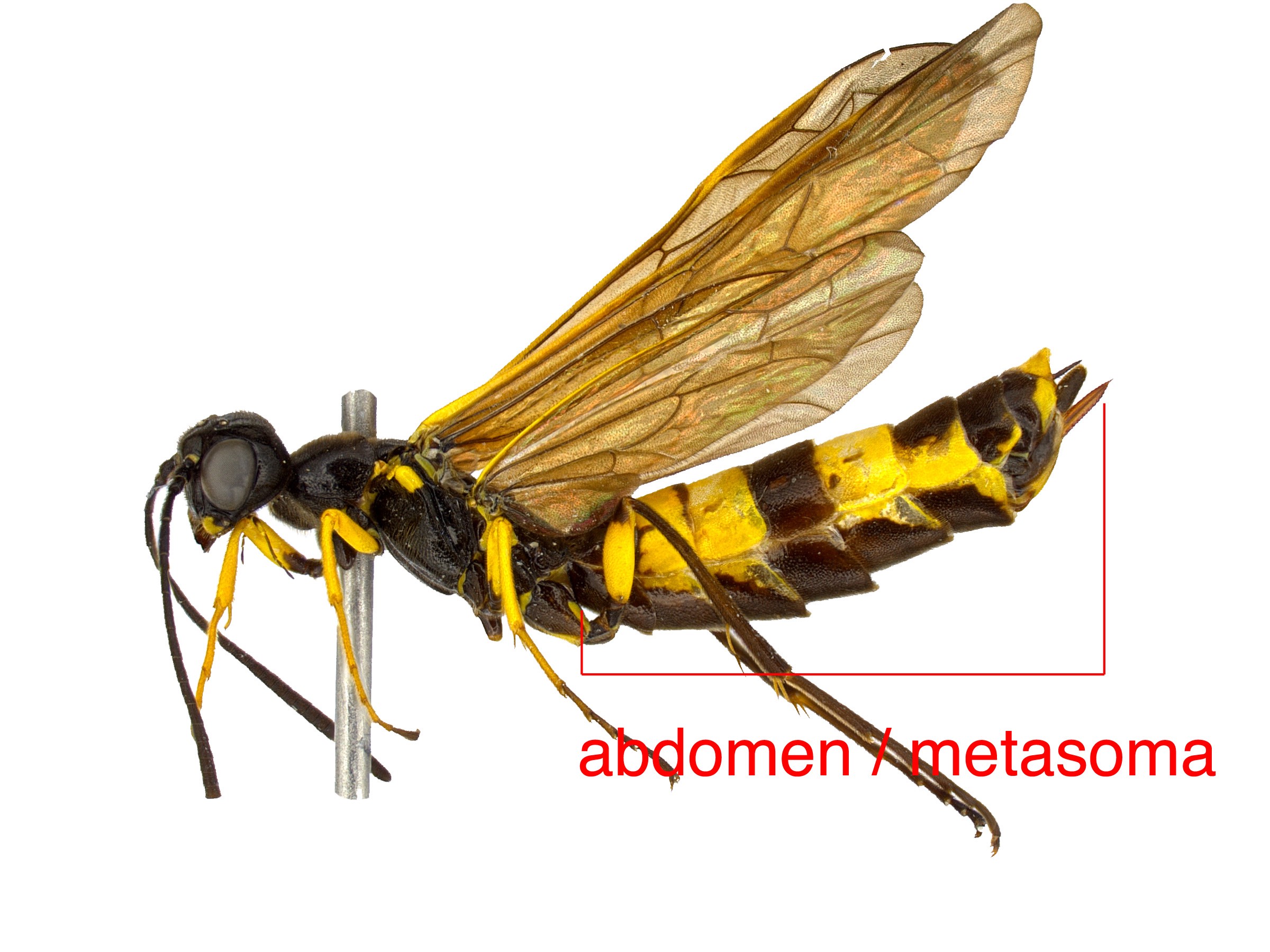 . Females in the family also possess a long, conspicuous ovipositorovipositor:
. Females in the family also possess a long, conspicuous ovipositorovipositor:
the female organ that deposits eggs and is used to drill into plant tissue, located at the apex of the abdomen, made up of the lance and lancet
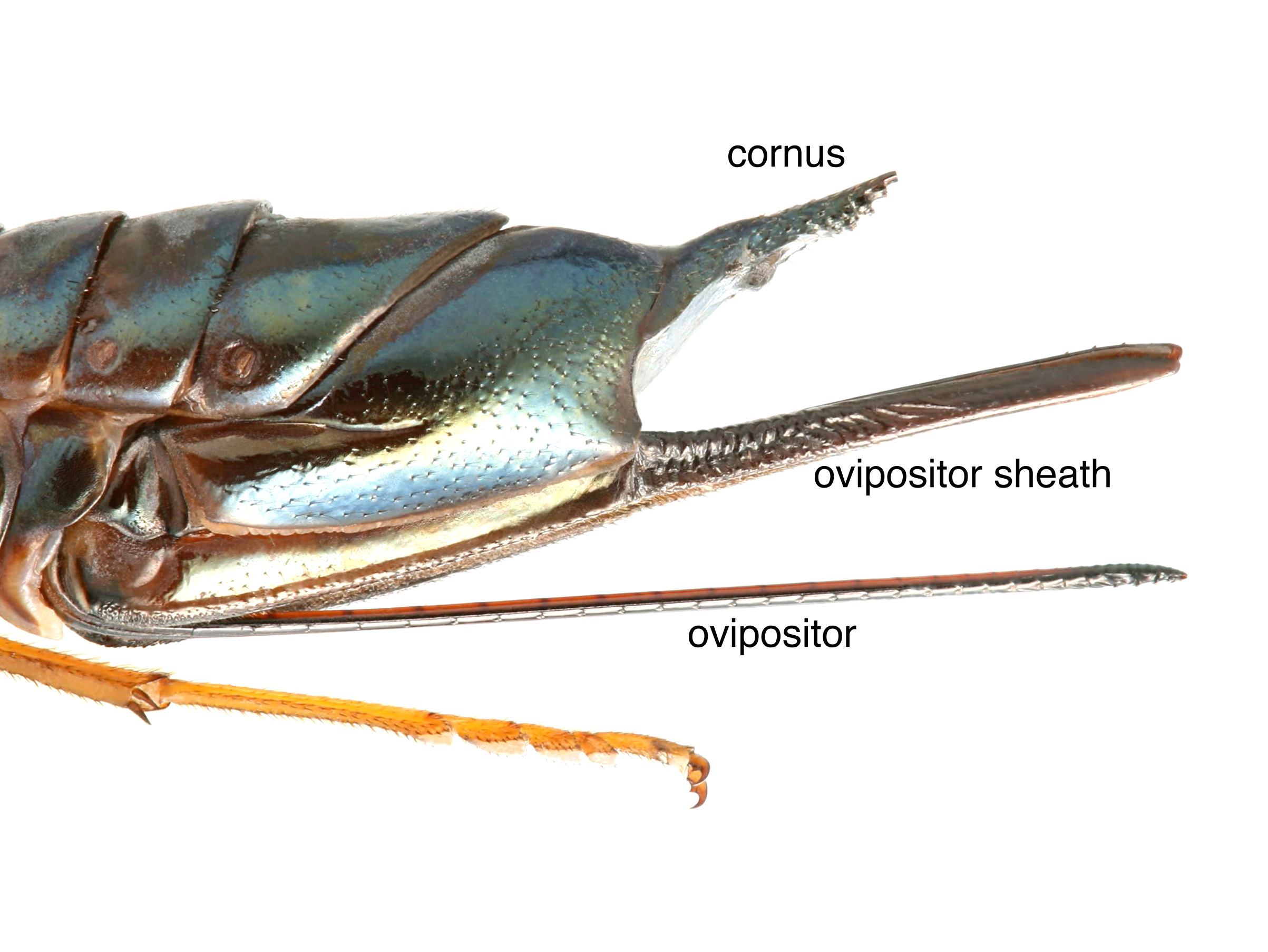 . This is often mistaken for a stinger, but it is harmless to animals and used for drilling into wood. This habit has inspired the other common name of this family: “woodwasps” (Klass 1974Klass 1974:
. This is often mistaken for a stinger, but it is harmless to animals and used for drilling into wood. This habit has inspired the other common name of this family: “woodwasps” (Klass 1974Klass 1974:
Klass C. 1974. Horntails or wood wasps. Insect Diagnotic Laboratory Cornell University.).
Horntails of the genus Eriotremex are large and slender with a cylindrically shaped abdomenabdomen:
the third and last segment of an insect's body; in sawflies this is usually made up of 11 segments (segments 9 and 10 often fused) . The body is generally all black or black with yellow bands, giving a hornet-like appearance. Females are on average larger than males, but becasue of high variability in size among species, the sexes are best distinguished by the presence or absence of the long ovipositorovipositor:
. The body is generally all black or black with yellow bands, giving a hornet-like appearance. Females are on average larger than males, but becasue of high variability in size among species, the sexes are best distinguished by the presence or absence of the long ovipositorovipositor:
the female organ that deposits eggs and is used to drill into plant tissue, located at the apex of the abdomen, made up of the lance and lancet
 (Schiff et al. 2012Schiff et al. 2012:
(Schiff et al. 2012Schiff et al. 2012:
Schiff NM, Goulet H, Smith DR, Boudreault C, Wilson AD, and Scheffler BE. 2012. Siricidae (Hymenoptera: Symphyta: Siricoidea) of the Western Hemisphere. Canadian Journal of Arthropod Identification 21: 1-305.).
The genus includes 12 described species worldwide, with the highest diversity in Southeast Asia. In North America, there is only one species, the introduced Eriotremex formosanus (Schiff et al. 2012Schiff et al. 2012:
Schiff NM, Goulet H, Smith DR, Boudreault C, Wilson AD, and Scheffler BE. 2012. Siricidae (Hymenoptera: Symphyta: Siricoidea) of the Western Hemisphere. Canadian Journal of Arthropod Identification 21: 1-305.).
A key to North American species of Eriotremex is included in Schiff et al. 2012Schiff et al. 2012:
Schiff NM, Goulet H, Smith DR, Boudreault C, Wilson AD, and Scheffler BE. 2012. Siricidae (Hymenoptera: Symphyta: Siricoidea) of the Western Hemisphere. Canadian Journal of Arthropod Identification 21: 1-305..
 (Schiff et al. 2012Schiff et al. 2012:
(Schiff et al. 2012Schiff et al. 2012: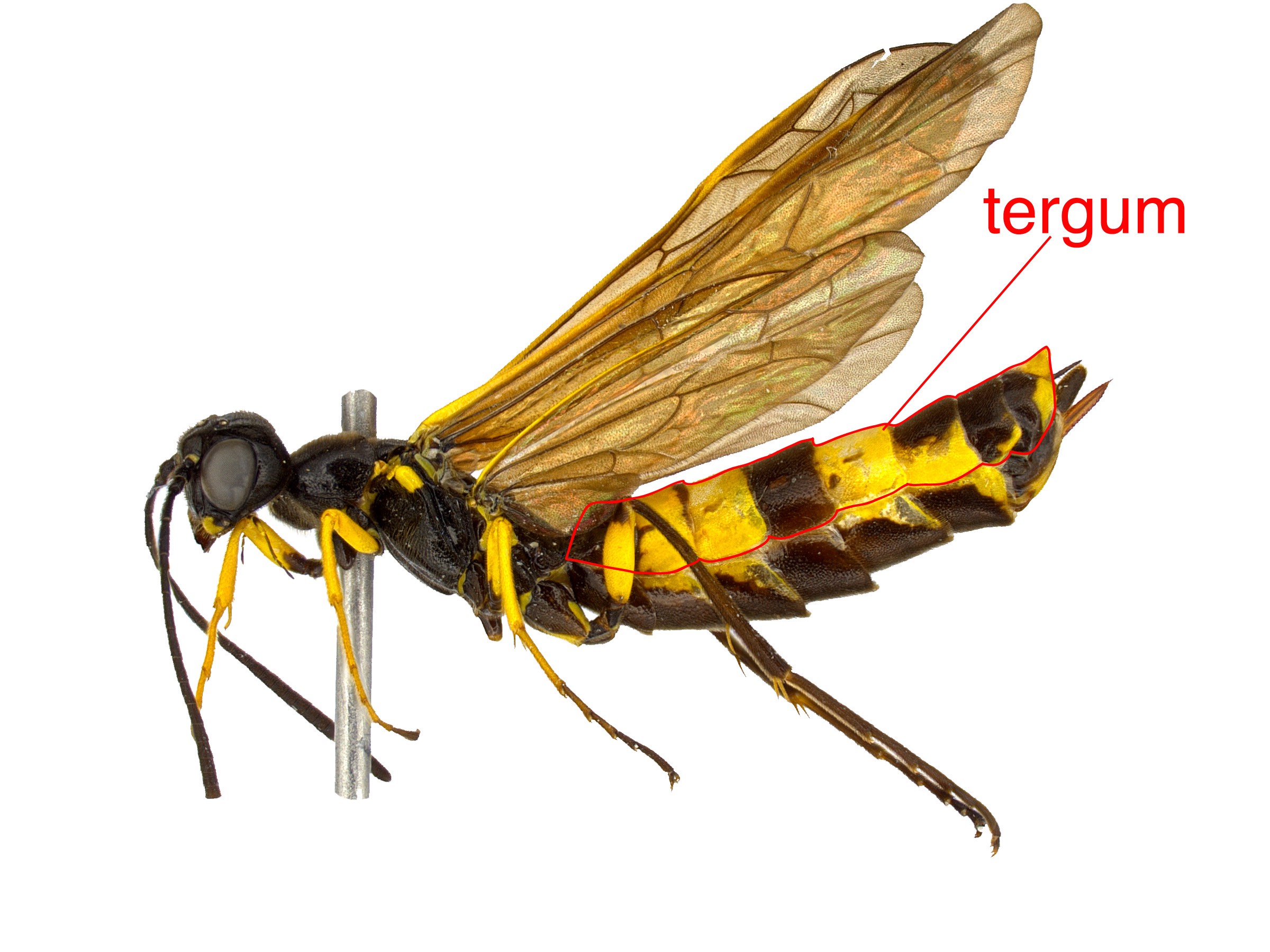 10 of the female, sternumsternum:
10 of the female, sternumsternum: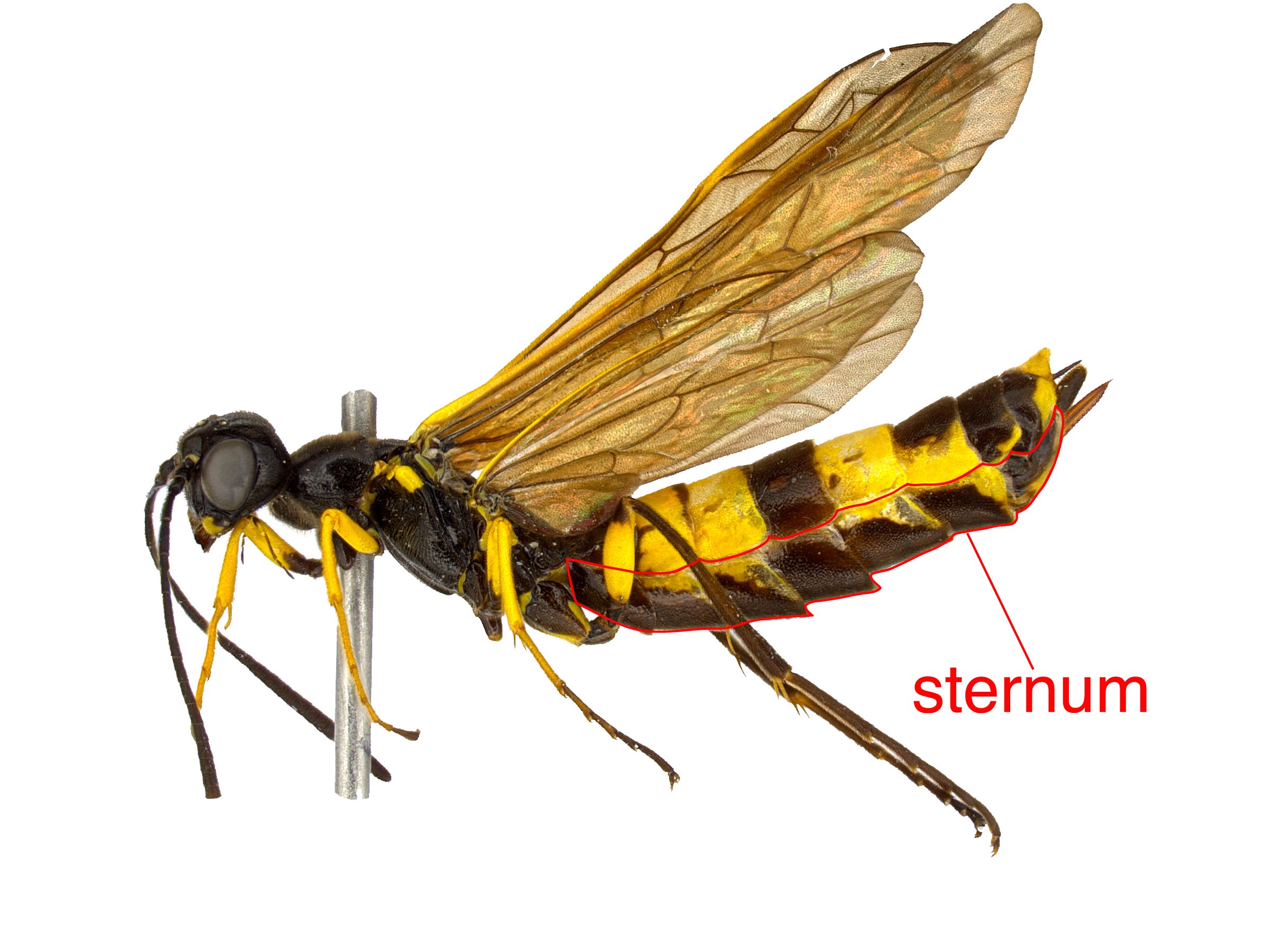 9 of the male, known as the cornuscornus:
9 of the male, known as the cornuscornus: (Schiff et al. 2012Schiff et al. 2012:
(Schiff et al. 2012Schiff et al. 2012: swollen in the center and slightly flattened laterally (Smith 2010Smith 2010:
swollen in the center and slightly flattened laterally (Smith 2010Smith 2010:specific characteristics for Eriotremex formosanus:
 (Smith 2010Smith 2010:
(Smith 2010Smith 2010: 2, 3, 7, and 8 (Schiff et al. 2012Schiff et al. 2012:
2, 3, 7, and 8 (Schiff et al. 2012Schiff et al. 2012:Eriotremex can be confused with other Siricidae, especially Tremex, because of the similar coloration. They can be distinguished from other genera in the family by the long and distinctively flattened antennaeantenna:
the sensory organ emerging from the front of the head, usually between the compound eyes and above the clypeus; includes the flagellum, scape and pedicel
 , lack of ridge on genagena:
, lack of ridge on genagena:
the area of the head between the compound eye and clypeus; also called the cheek
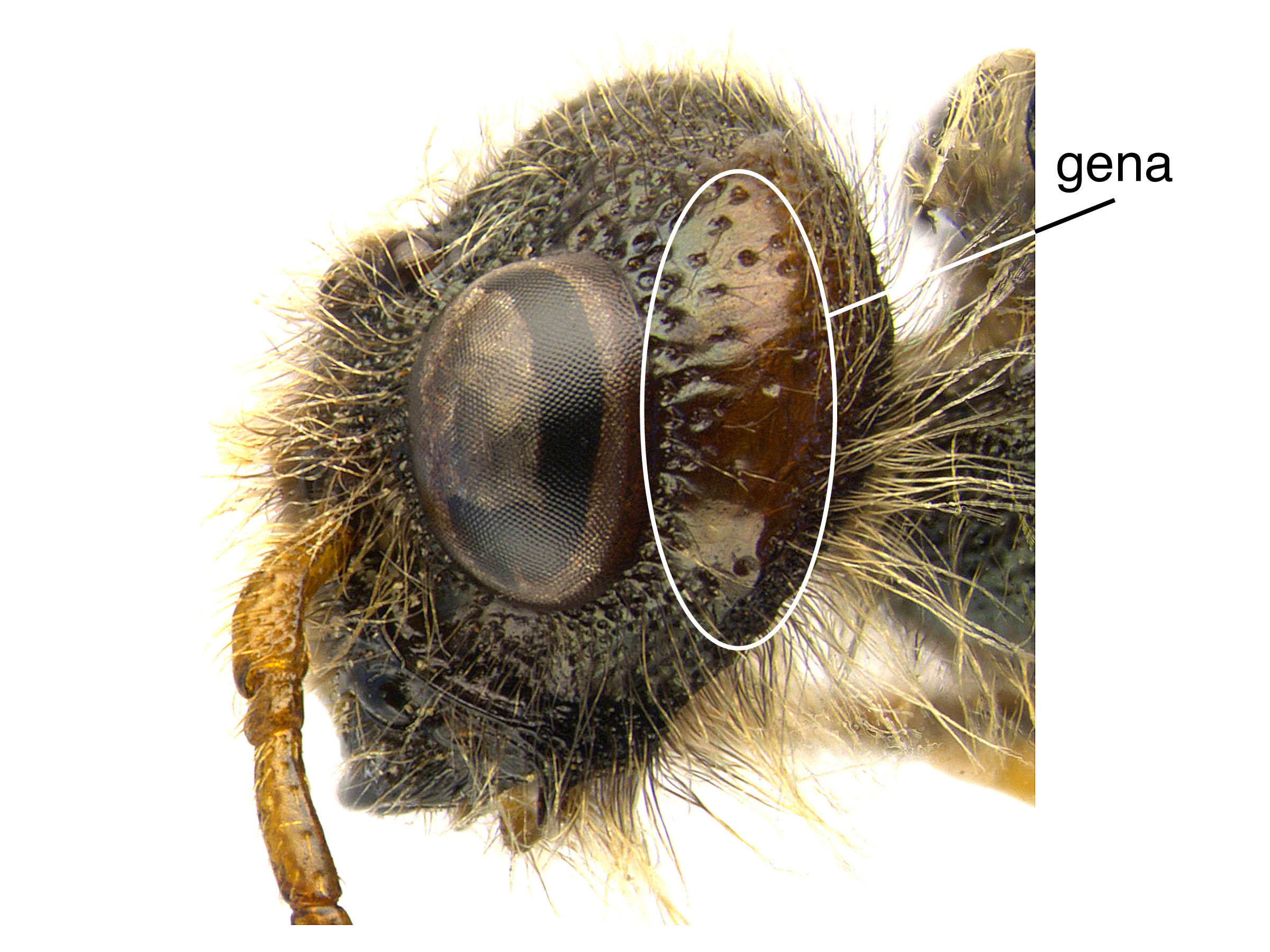 behind the eye, and dense, long hairs on the body (Smith 2010Smith 2010:
behind the eye, and dense, long hairs on the body (Smith 2010Smith 2010:
Smith DR. 2010. Five new Acordulecera Say (Hymenoptera: Pergidae) from Arizona and California, the first records of the family from southwestern United States. Proceedings of the Entomological Society of Washington 112 (3): 410-422. https://doi.org/10.4289/0013-8797.112.3.410).
Siricidae are commonly intercepted in wood packing materials at ports of entry. The potential of larval stages to persist and develop for multiple years increases the potential of successful establishment from improperly treated or disposed of wood material.
Eriotremex formosanus is native to southeastern Asia, specifically Taiwan and surrounding regions, and was introduced into southeastern United States in 1974 in Florida and Georgia. The species is well established, and is now the most common woodwasp of Florida (Li and Hulcr 2015Li and Hulcr 2015:
Li Y and Hulcr J. 2015. Asian Horntail Eriotremex formosanus (Matsumura) (Insecta: Hymenoptera: Symphyta: Siricidae: Tremicinae). University of Florida EENY 628.). However, its status as a pest is not certain, as the preferred hosts tend to be dead or dying trees. A recent concern with this species is potential displacement of the only native siricid woodwasp to also utilize angiosperms as host, Tremex columba (Ulyshen and Hanula 2010Ulyshen and Hanula 2010:
Ulyshen M and Hanula JL. 2010. Host-use patterns of Eriotremex formosanus (Hymenoptera: Siricidae) in South Carolina, U.S.A. Entomological News 121 (1): 97-101. https://doi.org/10.3157/021.121.0118).
Eriotremex is not well studied in its native range and its hosts are unknown. In North America, E. formosanus has been documented on Quercus spp. (oak), Carya spp. (hickory), and Liquidambar styraciflua (American sweetgum). The species has been observed flying in forests dominated by Pinus spp. (pine), but no evidence of successful development in pine is confirmed (Li and Hulcr 2015Li and Hulcr 2015:
Li Y and Hulcr J. 2015. Asian Horntail Eriotremex formosanus (Matsumura) (Insecta: Hymenoptera: Symphyta: Siricidae: Tremicinae). University of Florida EENY 628.).
Female Eriotremex harbor symbiotic basidiomycete fungi in abdominal glands called mycangia. During oviposition, the tree is inoculated with the fungus, which begins to decompose the surrounding wood. LarvaeLarva:
the immature stage of holometabolous insects
 feed on the fungus and in the process bore galleries through the wood. The fungal symbiont for E. formosanus is Cerrena unicolor. Females reserve mucus in additional abdominal glands, but the function of these reservoirs is not well understood (Schiff et al. 2012Schiff et al. 2012:
feed on the fungus and in the process bore galleries through the wood. The fungal symbiont for E. formosanus is Cerrena unicolor. Females reserve mucus in additional abdominal glands, but the function of these reservoirs is not well understood (Schiff et al. 2012Schiff et al. 2012:
Schiff NM, Goulet H, Smith DR, Boudreault C, Wilson AD, and Scheffler BE. 2012. Siricidae (Hymenoptera: Symphyta: Siricoidea) of the Western Hemisphere. Canadian Journal of Arthropod Identification 21: 1-305.).
Larvae are creamy white and grub-like in appearance with a dark head capsule. As with adults, larvaelarva:
the immature stage of holometabolous insects
 possess a short dorsaldorsal:
possess a short dorsaldorsal:
of or on the top surface of the body or structure
horn on the posterior end of the body. The larvaelarva:
the immature stage of holometabolous insects
 bore galleries while developing through 6–12 larval instars, depending on food availability, until pupation and subsequent emergence. Throughout this process, the larvaelarva:
bore galleries while developing through 6–12 larval instars, depending on food availability, until pupation and subsequent emergence. Throughout this process, the larvaelarva:
the immature stage of holometabolous insects
 use their horn to pack the tunnel behind them with sawdust. Emergence holes are perfectly circular. The fungal symbiont is carried in specialized organs in female larvaelarva:
use their horn to pack the tunnel behind them with sawdust. Emergence holes are perfectly circular. The fungal symbiont is carried in specialized organs in female larvaelarva:
the immature stage of holometabolous insects
 that develop into the mycangia after metamorphosis (Schiff et al. 2012Schiff et al. 2012:
that develop into the mycangia after metamorphosis (Schiff et al. 2012Schiff et al. 2012:
Schiff NM, Goulet H, Smith DR, Boudreault C, Wilson AD, and Scheffler BE. 2012. Siricidae (Hymenoptera: Symphyta: Siricoidea) of the Western Hemisphere. Canadian Journal of Arthropod Identification 21: 1-305.).
Adult Siricidae are not well studied (Schiff et al. 2012Schiff et al. 2012:
Schiff NM, Goulet H, Smith DR, Boudreault C, Wilson AD, and Scheffler BE. 2012. Siricidae (Hymenoptera: Symphyta: Siricoidea) of the Western Hemisphere. Canadian Journal of Arthropod Identification 21: 1-305.). Information on Eriotremex is especially lacking despite its potential importance as an invasive species. Observations in the United States suggest a preference for dead trees, and particularly for standing dead trees, or snags, as a host (Ulyshen and Hanula 2010Ulyshen and Hanula 2010:
Ulyshen M and Hanula JL. 2010. Host-use patterns of Eriotremex formosanus (Hymenoptera: Siricidae) in South Carolina, U.S.A. Entomological News 121 (1): 97-101. https://doi.org/10.3157/021.121.0118).
World: Except for E. formosanus, the genus is restricted to Asia and ranges from eastern India through China, Japan, Taiwan, and Vietnam, and as far east as Papua New Guinea (Li and Hulcr 2015Li and Hulcr 2015:
Li Y and Hulcr J. 2015. Asian Horntail Eriotremex formosanus (Matsumura) (Insecta: Hymenoptera: Symphyta: Siricidae: Tremicinae). University of Florida EENY 628.). Specimens are rarely collected in this range (Smith 2010Smith 2010:
Smith DR. 2010. Five new Acordulecera Say (Hymenoptera: Pergidae) from Arizona and California, the first records of the family from southwestern United States. Proceedings of the Entomological Society of Washington 112 (3): 410-422. https://doi.org/10.4289/0013-8797.112.3.410).
North America: The single species in North America is common in the southeastern United States (Schiff et al. 2012Schiff et al. 2012:
Schiff NM, Goulet H, Smith DR, Boudreault C, Wilson AD, and Scheffler BE. 2012. Siricidae (Hymenoptera: Symphyta: Siricoidea) of the Western Hemisphere. Canadian Journal of Arthropod Identification 21: 1-305.). Eriotremex formosanus ranges as far north as Virginia and as far west as Arkansas. Interceptions have been made farther west, including one in Utah, and several in Hawaii, but there is no evidence that it is established (Li and Hulcr 2015Li and Hulcr 2015:
Li Y and Hulcr J. 2015. Asian Horntail Eriotremex formosanus (Matsumura) (Insecta: Hymenoptera: Symphyta: Siricidae: Tremicinae). University of Florida EENY 628., Janis Matsunaga pers. comm. 2020).
Map data from: GBIF.org (26 June 2019) GBIF Occurrence Download Eriotremex and the Smithsonian National Museum of Natural History (USNM)
Details about data used for maps can be found here.